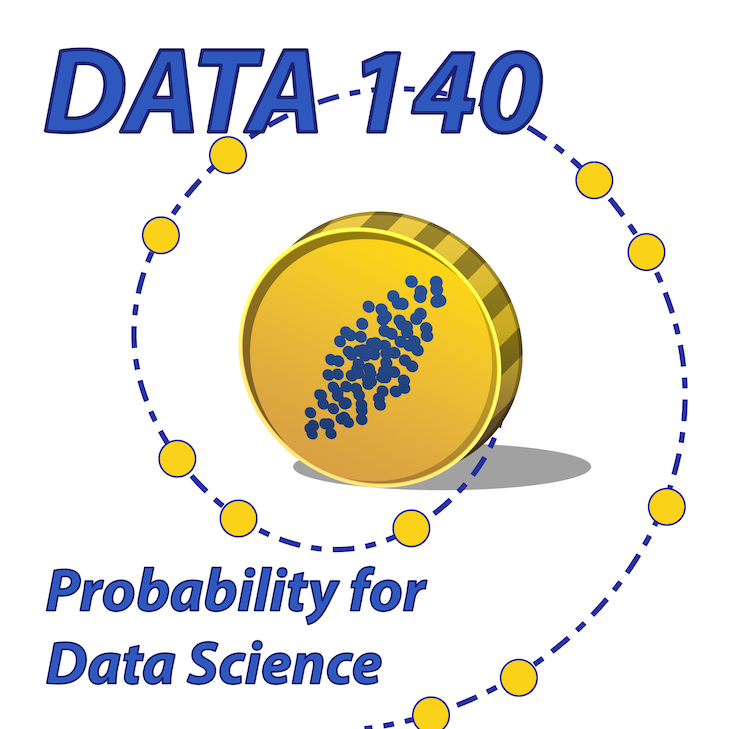11.3. Metropolis Algorithm#
The goal of Markov Chain Monte Carlo (MCMC) is to generate random samples from complicated high dimensional distributions about which we have incomplete information. For example, it might be that we don’t know the normalizing constant of the distribution, as we saw in the code breaking example of the previous section.
See More
Imagine a large state space
Now suppose we are interested in a particular probability distribution on this space. We are going to call this probability distribution
In the code-breaking setting, we are interested in the mode of
Since can’t compute
That is what MCMC does. The procedure relies on a few observations.
Suppose we can create a Markov Chain
Suppose we can construct such a chain. By the definition of a mode,
Creating a chain involves creating a transition matrix. To create a transition matrix that results in
The detailed balance equations are equivalent to
The right hand side only involves the transition probabilities of the chain that we want to create. The left hand side only involves ratios of the terms in
11.3.1. Metropolis Algorithm#
Exactly who proposed the first algorithm to create such a Markov Chain is the subject of some debate. A general version was proposed by Hastings. Here we will describe an earlier version attributed to Metropolis and co-authors in 1953.
The goal is to create a transition matrix
The algorithm starts with any symmetric, irreducible transition matrix
The algorithm then introduces additional randomization to create a new chain that is irreducible and aperiodic and has
Here are the rules that determine the transitions of the new chain.
Suppose the chain is at
Define the acceptance ratio
If
If
If the coin lands heads, set
If the coin lands tails, set
Repeat all the steps, with
Thus the new chain either moves to the state picked according to
The new chain is irreducible because the proposal chain is irreducible. It is aperiodic because it can stay in place. So it has a steady state distribution.
The algorithm says that this steady state distribution is the same as the distribution
See More
11.3.2. How to Think About the Algorithm#
Before we prove that the algorithm works, let’s examine what it is doing in the context of decoders.
First notice that we are requiring
Fix any starting decoder and call it
To decide whether or not the chain should move to
The algorithm does this by comparing the acceptance ratio
If
If
11.3.3. The Algorithm Works#
We will now show that the detailed balance equations are solved by the desired limit distribution
Take any two distinct states
11.3.3.1. Case 1:
Then
Therefore
11.3.3.2. Case 2:
Then
Now
Therefore
which is the same as
11.3.3.3. Case 2:
Reverse the roles of
That’s it! A simple and brilliant idea that provides a solution to a difficult problem. In lab, you will see it in action when you implement the algorithm to decode text.

